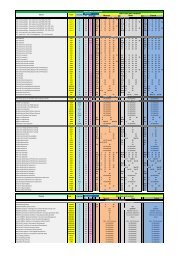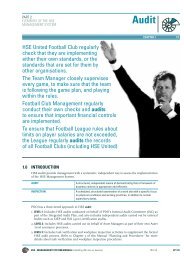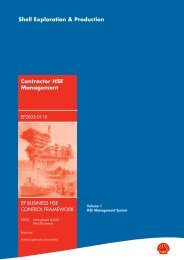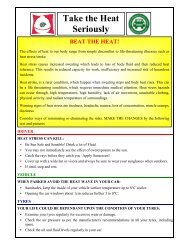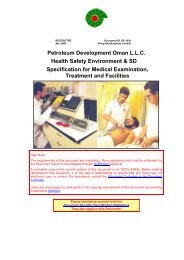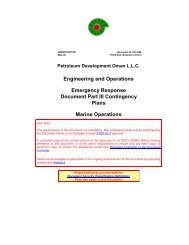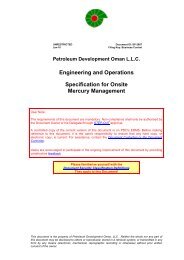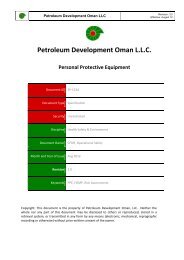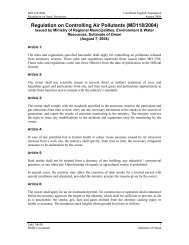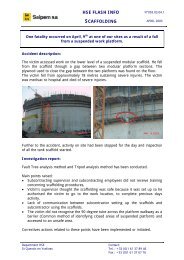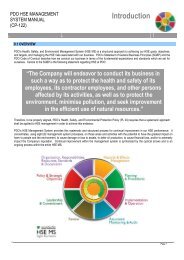Estate Service Asset - PDO
Estate Service Asset - PDO
Estate Service Asset - PDO
You also want an ePaper? Increase the reach of your titles
YUMPU automatically turns print PDFs into web optimized ePapers that Google loves.
Petroleum Development Oman<br />
<strong>Estate</strong> <strong>Service</strong>s <strong>Asset</strong><br />
Environmental Assessment<br />
2002 Review and Update<br />
The influent into MAF-STP consists of wastewater generated from all toilets and<br />
washrooms in the office buildings and the wastewater generated from the MAF camp<br />
kitchen. Additionally, a car wash area located at the waste management compound<br />
discharges excess wastewater to the sewer system via a grease trap. The influent into<br />
RAH-STP consists of wastewater generated from all the households, two restaurants<br />
located in the RAH recreation centre and <strong>PDO</strong> school.<br />
Both the STPs are similar in configuration and are based on the activated sludge<br />
system. Each STP consists of the following seven unit processes.<br />
• Screening and Maceration<br />
The raw sewage collecting into the underground sewage sumps passes through bar<br />
screens to remove large floating matter, then pumped into the STP by a screw lift<br />
pump via a macerator. The macerator comminutes all coarse solids present in the<br />
sewage into fine suspended matter. From the macerator, the homogenised sewage is<br />
dosed with a multi-nutrient chemical (Biologic-SR2) at an approximate concentration<br />
of 1 ppm.<br />
• Aeration<br />
There are three parallel aeration channels, each of 24m-length and 3m-water depth.<br />
The middle channel is of 3m width, while the right and left channels are of 2m width.<br />
The sewage flow is split evenly among the channels such that the hydraulic retention<br />
time in each channel is approximately 24 hours. Brush aerators located at the inlet of<br />
the aeration channels provide the oxygen required. These aerators are designed to<br />
operate continuously, providing a dissolved oxygen level in the range of 1.5 to<br />
3.25ppm. The sewage in the aeration channels is internally re-circulated to ensure<br />
good mixing and to eliminate the settling of solids in the aeration channels. Due to<br />
the biochemical oxidation of the sewage by the aerobic bacteria present, the biological<br />
oxygen demand (BOD) is reduced and simultaneously, the biomass is increased.<br />
• Clarification<br />
The effluent from the aeration channels then flows into a sludge-blanket clarifier,<br />
where the excess biomass is settled as sludge. The sludge blanket formed acts as a<br />
physical filter for smaller particles, thus improving the efficiency of the clarification<br />
process. The clarifier has a design hydraulic retention time of 4 hours. To maintain a<br />
healthy biomass concentration (mixed liquor suspended solid concentration of 3500-<br />
4000 mg/L), 10-20% of the settled sludge is returned to the aeration channels. The<br />
©HMR Environmental Engineering Consultants C4 - 4<br />
Oman’s Environmental Consultancy<br />
HMR\1501\<strong>Estate</strong> <strong>Service</strong>s



